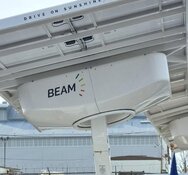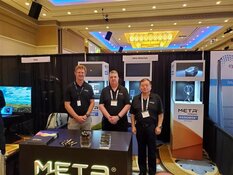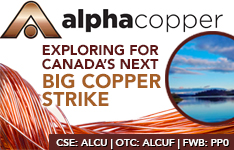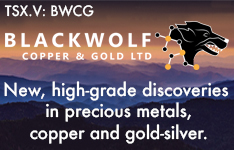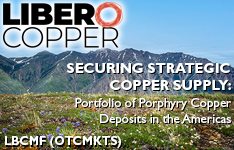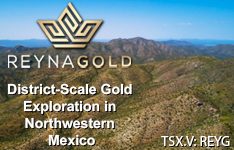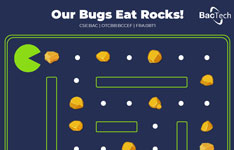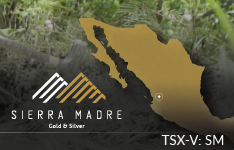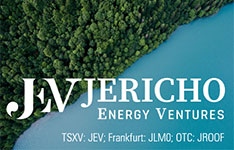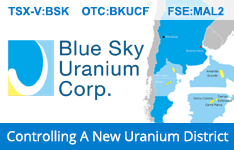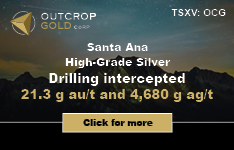Huge news came out from Bion Environmental on Monday! They announced a letter of intent to develop a 45,000- head sustainable beef project with Olson Farms/TD Angus. I was in the middle of writing an article about Bion and why I think they are a great buy, when this news came out. So, I am going to carry on, but now with even higher expectation.
Bion Technologies and Walmart
What really sticks out to me about their latest announcement is how it ties Bion to Walmart. The company has been careful with their words, but you don’t have to look very deep to see the connection.
Bion is now planning a 45k head project with Olson Farms/TD Angus. It is worth noting that Olson Farms/TD Angus is a founding member of Sustainable Beef, LLC, with a rancher-owned, 325 million dollar, packing plant being developed in North Platte, NE. Walmart just announced an equity investment to buy a minority stake in Sustainable Beef, LLC.
Connecting the dots seems pretty easy here. It looks like Walmart is showing that they have sufficient demand for a premium product and want to secure its distribution.
In late September, Bion added Bill Rupp to its Advisory Group, he also happens to be a principle of Sustainable Beef, LLC., a former president at Cargill and JBS, two of the world’s top three meat packers.
Demand
Fun Fact: In 2021, Walmart US did 4.1 billion dollars in beef sales, Walmart Mexico did 321 million dollars in beef sales. That is just under 6 million cattle being sold through Walmart alone.
Most investors are familiar with the meteoric rise (and subsequent fall) of the plant-based meat companies over 2021 and 2022. I believe the lesson to be learned from it is two-fold, there is a great demand for alternatives to current farming practices and there is still a massive demand for animal proteins. A recent survey Midan Marketing showed that 62% of American consumers purchase premium beef.
The global demand for beef cattle is 1.1 billion, with 90 million of that being in the US.
BION is effectively creating a new premium niche, sustainable beef. Their system turns environmental liabilities into agricultural assets. It greatly reduces environmental damage, provides economic benefits to farmers, and also provides benefits to the end consumer.
The Problem
The problem with traditional feedlot systems is the intensity. They place cows in massive outdoor feedlots for up to 3 months of ‘finishing’. The waste from these cows is spread untreated onto fields and leads to nitrate contamination in groundwater, toxic algae blooms, and increases phosphorus in the soil. The methane, ammonia and NOX from the cattle is also released into air. This is an environmental disaster on its own, but the practice also increases pathogens and antibiotic resistance in cattle.
Bion has the solution
Bion Environmental Technologies specializes in developing advanced technology for treating livestock waste. In plain English, they take animal poop and turn it into money. They process the waste back into biogas, clean water and fertilizer. The image below shows what the annual waste from 15,000 cattle becomes with their process.
The BION system can work will all sorts of livestock, but since their current agreements are cattle based, that is what I’ll focus on.
Their system includes large, covered barns that protect the animals from the elements. The system utilizes with solar-powered lighting, manure conditioning and collection, biogas upgrading and recovery, ammonia capture and manufacturing of organic fertilizer products, and clean water recovery. All operations will be third-party validated, USDA-certified, and blockchain-recorded, resulting in a premium product that is transparent, sustainable, and has significantly lower environmental impacts on air, water, and land.
Project Economics
Before the announcement, Bion already had plans for one 15,000-head sustainable beef project with Ribbonwire Ranch and the economics of it are impressive! (The Ribbonwire agreement is for one 15k head module, with an option for another three. The following numbers are based off of one module.)
The following image is taken from their investor deck. It shows the breakdown for a 15,000-head system, including both organic and sustainable beef. The capital costs are much higher for the BION system, coming in at 42.9 million dollars each, compared to 8 million dollars for a outdoor feedlot. It does not take long for return on the investment, due to the multiple income streams and higher margins. A traditional feedlot is estimated to bring in less than half the revenue. The beef industry is a low margin world and doubling your revenue is a dream come true for farmers.
Projects and Partnerships
Take that last analysis and triple it! Three of Bion's 15,000-head modules will make up the Olson Farms/TD project, Construction is expected to start in the second half of 2023 with a definitive joint venture in early 2023. By the end of 2024, early beef and coproduct earnings are anticipated, and in 2025, production might reach up to 135,000 head annually.
Showcase
Both the Ribbonwire Ranch and Olson Farms projects will serve as a sort of showroom for other cattle farmers. I expect to see significantly increased demand for their systems after a successful launch at either project.
Blockchain
Another element that I think is worth reviewing is the blockchain tracking system. I will admit to not being a fan of cryptocurrency, but if there is one good thing to come out of crypto, it is the blockchain. The ability to store information immutably on the blockchain provide a number of food safety protections and allows consumers to know that if they are buying organic or sustainable products that they are really getting what they paid for. In the event of a food recall, there will be no doubt as to what products are potentially bad. This is a huge cost savings for retailers. Often there is a recall, and they just offer refunds for anything bought between certain dates. With blockchain, they could simply say, “products ending in 4232, need to be returned”, or something of the like.
Analyst Targets
Back in July, Clive Maunde, suggested that Bion was building up to a major bull market. It was trading at $1.05 when he said that, and today’s price of $1.45 seems to point to the same thing. This technology is gaining traction. The stock price is gaining traction.
A few months ago, I was able to find a report by Jeff Campbell, former analyst with Alliance Global, and gave a price target of $3 back in August. This price target was only including the Ribbonwire deal and did not include the recent deals.
I have not given enough time or words to the environmental benefits or potential tax credits that could be involved. I see BION being a steady grower over the next few years. These projects take time to develop, but it is hard to deny that they are gaining momentum. I am hoping to see additional deals in the coming months.


